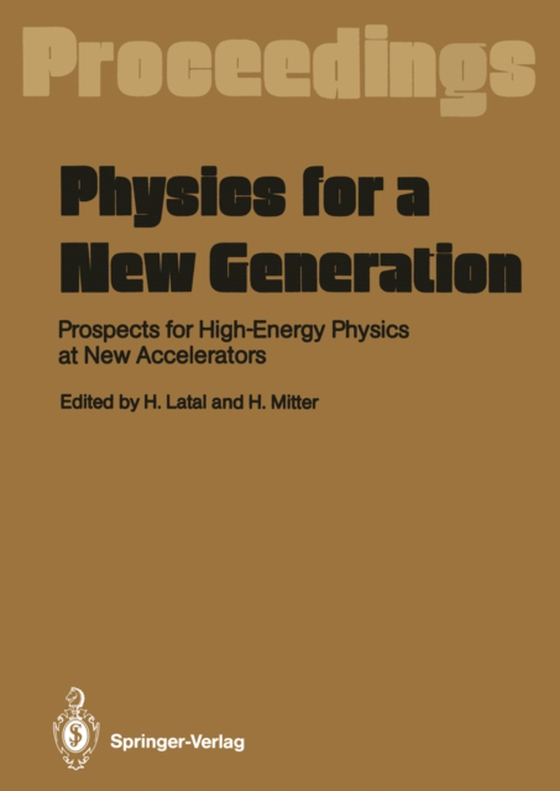
Physics for a New Generation e-bog
875,33 DKK
(inkl. moms 1094,16 DKK)
th This volume contains the written versions of invited lectures presented at the 28 "e;Internationale Universitatswochen fUr Kernphysik"e; in Schladming, Austria in March 1989. The generous support of our sponsors, the Austrian Ministry of Science and Research, the Government of Styria, and others, made it again possible to invite expert lecturers. The courses were centered on elementa...
E-bog
875,33 DKK
Forlag
Springer
Udgivet
6 december 2012
Genrer
PDD
Sprog
English
Format
pdf
Beskyttelse
LCP
ISBN
9783642755675
th This volume contains the written versions of invited lectures presented at the 28 "e;Internationale Universitatswochen fUr Kernphysik"e; in Schladming, Austria in March 1989. The generous support of our sponsors, the Austrian Ministry of Science and Research, the Government of Styria, and others, made it again possible to invite expert lecturers. The courses were centered on elementary particle physics to be performed with large accelerators accessible in the immediate future, including some reports on the current situation. Thanks to the efforts of the speakers it was possible to obtain excellent surveys. After the School the lecture notes were revised and partially rewritten in TPC by the authors, whom we thank for their labour. Unfortunately the report on the situation at SLAC by M. Swartz could not be included. Thanks are also due to the publishers for their patience. Graz, Austria H. Latal December 1989 H. Mitter v Contents Phenomenology of and Beyond the Standard Electroweak Model By A. Bartl, H. Pietschmann, and H. Stremnitzer (With 6 Figures) 1 1. The Standard Model (H. Pietschmann) . . . . . . . . . . . . . . . . . . . . . . . . . . 1 1. 1 Introduction . . . . . . . . . . . . . . . . . . . . . . . . . . . . . . . . . . . . . . . . . . . 1 1. 2 Defining the Standard Model . . . . . . . . . . . . . . . . . . . . . . . . . . . . . 1 1. 3 Testing the Standard Model . . . . . . . . . . . . . . . . . . . . . . . . . . . . . . . 4 1. 4 Predictions . . . . . . . . . . . . . . . . . . . . . . . . . . . . . . . . . . . . . . . . . . . . 5 1. 5 Open Questions . . . . . . . . . . . . . . . . . . . . . . . . . . . . . . . . . . . . . . . . 6 1. 6 Hypotheses. . . . . . . . . . . . . . . . . . . . . . . . . . . . . . . . . . . . . . . . . . . . 6 1. 7 Conclusion . . . . . . . . . . . . . . . . . . . . . . . . . . . . . . . . . . . . . . . . . . . . 9 2. Beyond the Standard Model: Supersymmetry (A. Bartl) . . . . . . . . . . . . 9 2. 1 Supersymmetric Extension of the Standard Model . . . . . . . . . . . . 10 2. 2 Production and Decay of Supersymmetric Particles . . . . . . . . . . . 17 3. Beyond the Standard Model: Composite Models (H.
 Dansk
Dansk

